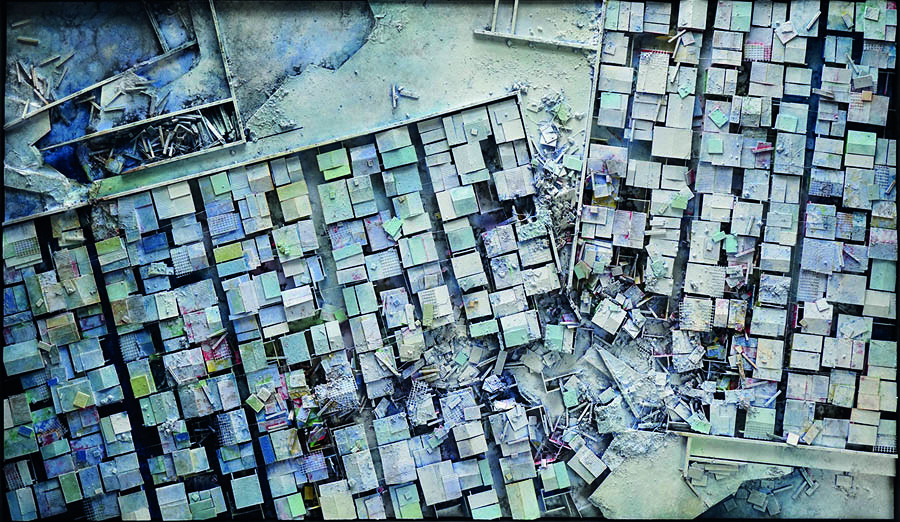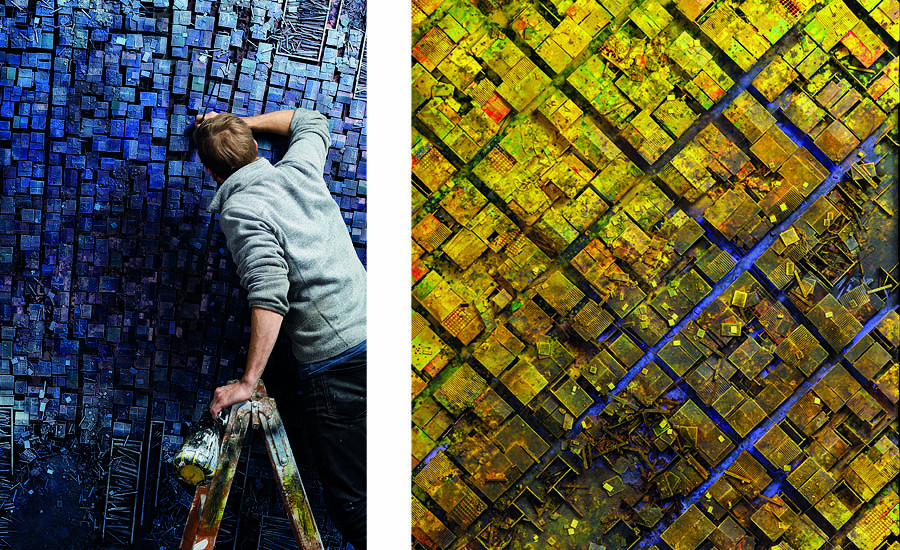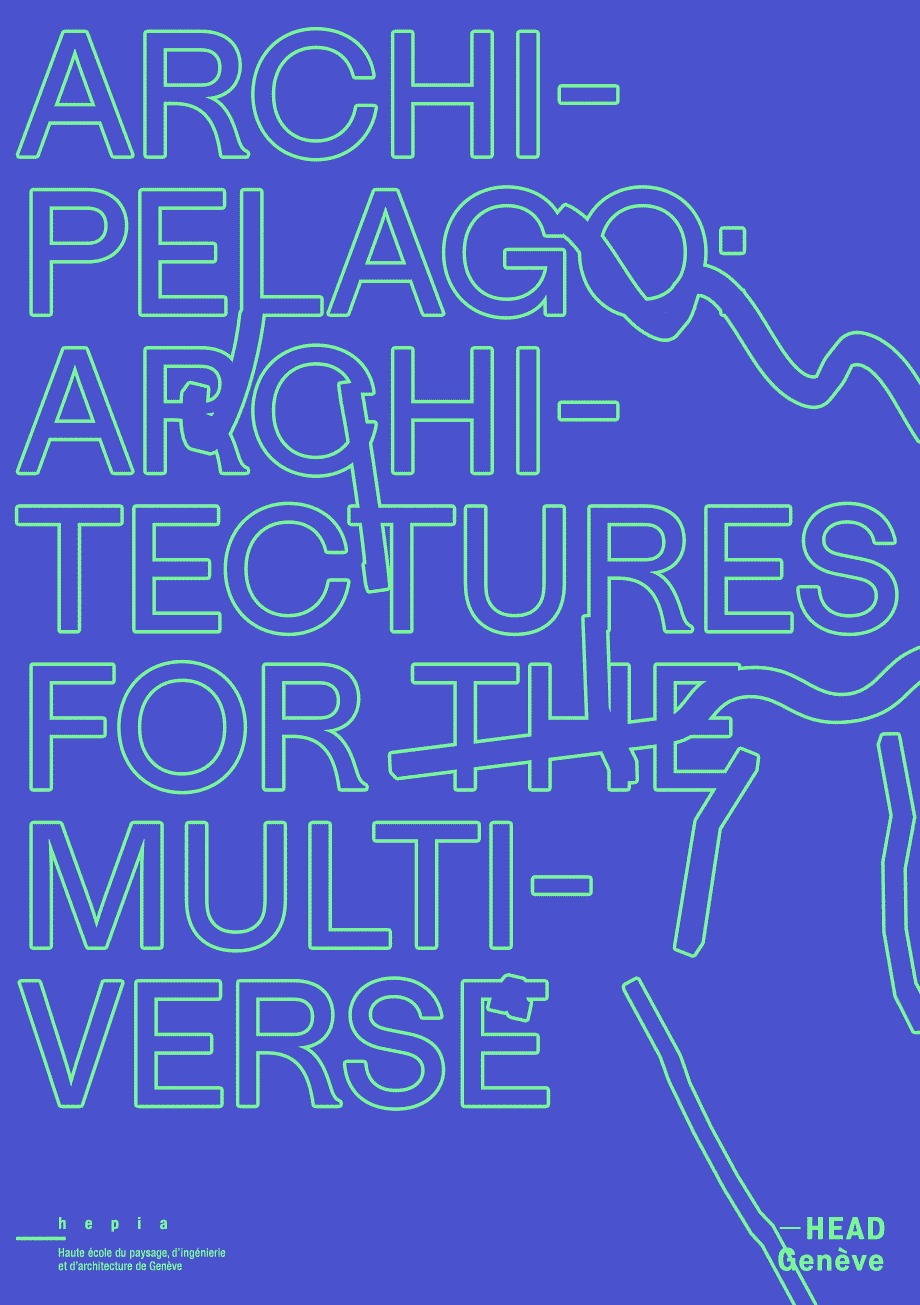
Hendrik Czakainski’s Imaginary Architectures
First he was a painter, and has taugth architecture at the Beuth Technical School in Berlin. Today, he now devotes himself entirely to artistic creation. German artist Hendrik Czakainski has been designing imaginary architectures for almost 10 years, which he presents as wall sculptures. These urban fabrics he creates as large wall sculptures oscillate between “order and chaos, norm and deviation, the concrete and the abstract”.
On the occasion of his exhibition at the Wallworks gallery in Paris from 21 May to 10 July 2021, AA shares here the interview the artist gave to journalist Jean-Philippe Hugron in 2016, published in AA 413.
L’Architecture d’Aujourd’hui: Self-taught and trained as a joiner, you recently exhibited creations greatly inspired by the urban world, during the Urban Art Fair in Paris but also in Berlin, at the Urban Spree Gallery. Can you tell us more about your inspirations?
Hendrik Czakainski: I try to convey in my work a view of the phenomena that occur through globalization, industrialization and demographic development processes. Its content can be linked to catastrophes, to shanty towns and even to particularly polluted industrial sites. I try to express all of this in beauty. As for my inspirations, I cannot really name a work, or line up names of architects, or refer to any particular construction. This said, I have been particularly influenced by my travels in India and Nepal. Here I visited shanty towns and was faced with particularly difficult situations.
Can you explain how you work?
I observe endless and sometimes insignificant details, in science-fiction and action movies in which special effects abound and even in documentaries. I collect all these images and screenshots and I position them pretty much all over my studio. Then more precise ideas come to mind and I quickly express them in a drawing. That’s when I begin to use shapes. I add some and I remove some. Once I even had a work that was supposedly finished sawed in two just to be more precise. I also work horizontally. I need to constantly change perspective: I position my work on a wall and I look at it from a distance, then I get closer to it and I climb a ladder to look at it from above. Most of my works are then hung for several weeks in my workshop. Generally, I take advantage of this to begin another work and it is this distance that always results in other often decisive changes. In addition, my works overlap each other and I create different compositions at the same time, so they affect one another. Furthermore, I try to teach this to my students.
At the Beuth University of Applied Sciences Berlin, your course is called “free representation”. How can art contribute to a technical training?
Let it be said first that I did not follow a standard training. I am self-taught. This is why I wish to create a special relationship with my students, through my teaching. The aim of my course is to teach them about perspective representation, drawing, composition, drawing techniques, the use of various materials and even the building of models. I try to develop all their abilities and even more; their aesthetic awareness. In return, they teach me the more technical sides and in particular the bases of functional architecture. This is a very enriching exchange and, in a certain way, it influences my understanding of architecture and subtly feeds my art.
What is your relationship to architecture?
Shapes, structures and spaces have always fascinated me. As a young man, I learnt a lot about the built environment by skateboarding. On a skateboard, you develop an understanding of architecture in very different contexts. I have never lost this viewpoint. Through my training as a joiner I learnt to think about construction and space through drawing and representation.

What do questions of scale, space and material mean to you?
Some information shown to the viewer through a work of art depends on where it is exhibited. Everything begins, of course, with the works’ space in which the relationship between shape and structure is set out and it is completed by the situation in space in which the work is contemplated. The role of spatiality is all the more important to my thinking in that my visual work generally stretches out over time. In this respect, I would like to work on an even greater scale! As for material, I try to play with illusions. For example, I wish to make a work appear heavier than it actually is. Others show metal features or create a concrete lookalike; yet I only use cardboard, paper and sometimes fibre boards. By working with colour and adding metallic powder or even using acid, you can always successfully obtain these other materials.
Lastly, could you share your thoughts on contemporary architecture?
For me architecture is the mirror of time. In a period marked by disparity and divisions, while a great part of the population lives in poverty and is housed in terrible conditions, there are people all over the world who are thriving on economic wealth. And where there is wealth, the buildings erected can be unbelievably impressive, one could even say overpowering. This increasingly sculptural architecture shows that the development of techniques as well as materials offers countless possibilities. This kind of architecture even appears capable of linking life, aesthetics and function. It is also fascinating to see that the art of building creates improbable places and makes hostile countries in distant places more habitable. Although the objective is to look towards greater harmony between man and nature, I find the interaction between architecture and natural forces more interesting still. One of the contemporary challenges, I believe, is to be able to cope with natural catastrophes.
Click on the picture to the left to scroll through the images.
www.wallworks.fr
www.hendrikczakainski.com








